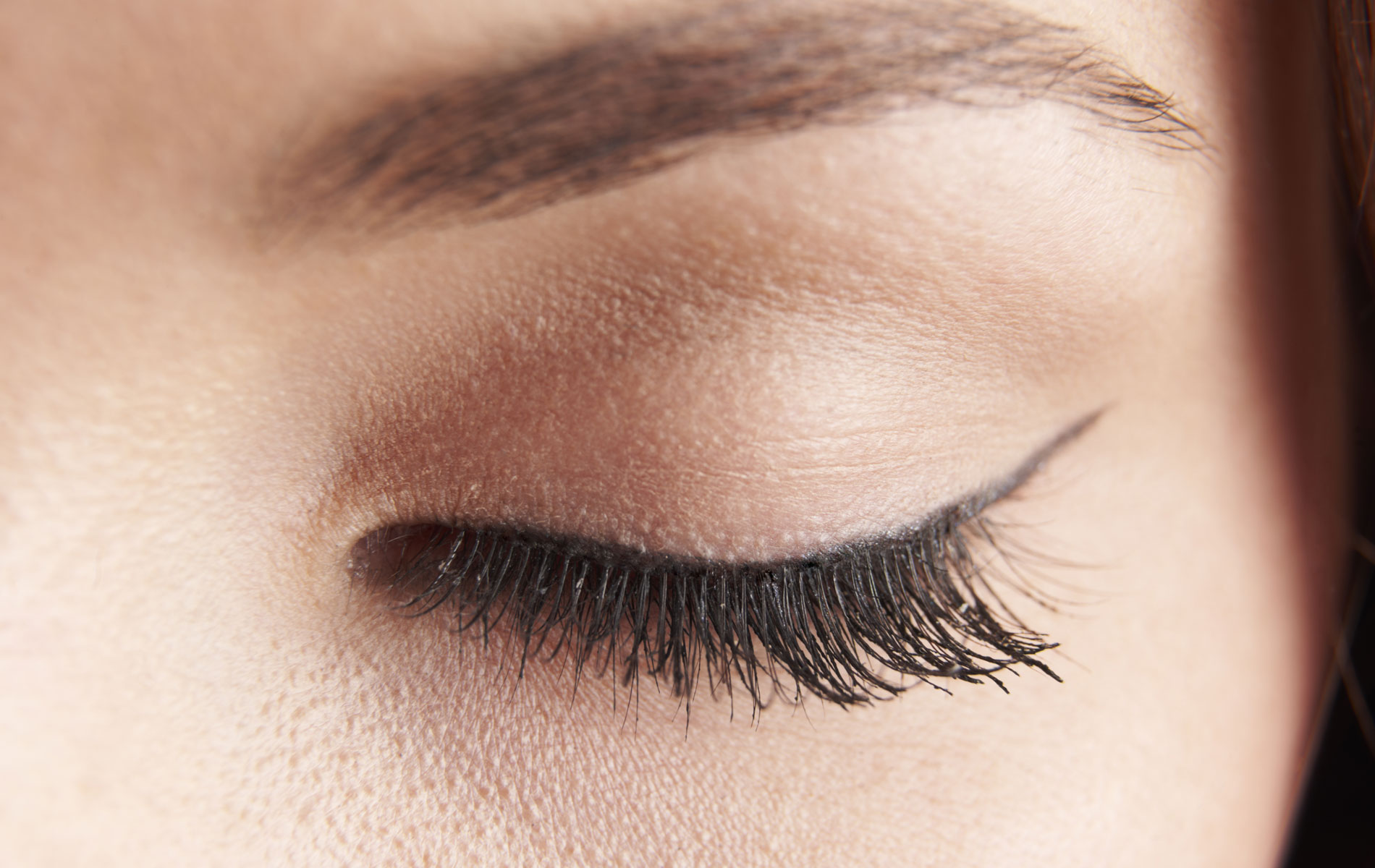Eyes are often the subject conversation when it comes to looking for a more youthful appearance. Droopy skin around our eyes, can be nipped and tucked to give a patient an entirely new look. A blepharoplasty, commonly referred to as ‘eyelid surgery,’ is a cosmetic procedure that changes the appearance around the eyes by altering the skin and fat deposits in that area.
Some blepharoplasties are also medical, in that they can enhance an individual’s eyesight.

Upper Eyelid Blepharoplasty
Sometimes the upper eyelids can appear saggy, or have extra folds that droop over the eye, either of these can make you appear older than your age, or perhaps show your actual age. An upper eyelid blepharoplasty can remove the droopiness from the eyelid by removing extra skin and folds to give you a younger look.
Lower Eyelid Blepharoplasty (extra skin and dark circles)
 The need for taught skin around the eyes can also apply to the area beneath the eye. Excess fat can be mistaken for dark circles and excess skin can make the area seem droopy. Sometime the skin can sag so much it reveals extra white underneath the iris, which can be very uncomfortable.
The need for taught skin around the eyes can also apply to the area beneath the eye. Excess fat can be mistaken for dark circles and excess skin can make the area seem droopy. Sometime the skin can sag so much it reveals extra white underneath the iris, which can be very uncomfortable.
For these and other reasons, the excess skin and/or fat under the eyelid can be removed.
Blepharoplasty – the steps involved
The first step in this procedure is to numb the associated area. Patients can choose between local anesthesia, sedation, a general anesthetic or a combination of these.
Almost all types of blepharoplasty can be performed under a local anesthetic. One of the main concerns in doing this is that the patient is aware of their surroundings during the procedure. They wont feel it, but they will hear it and be aware of it. This level of awareness can make the patient anxious.
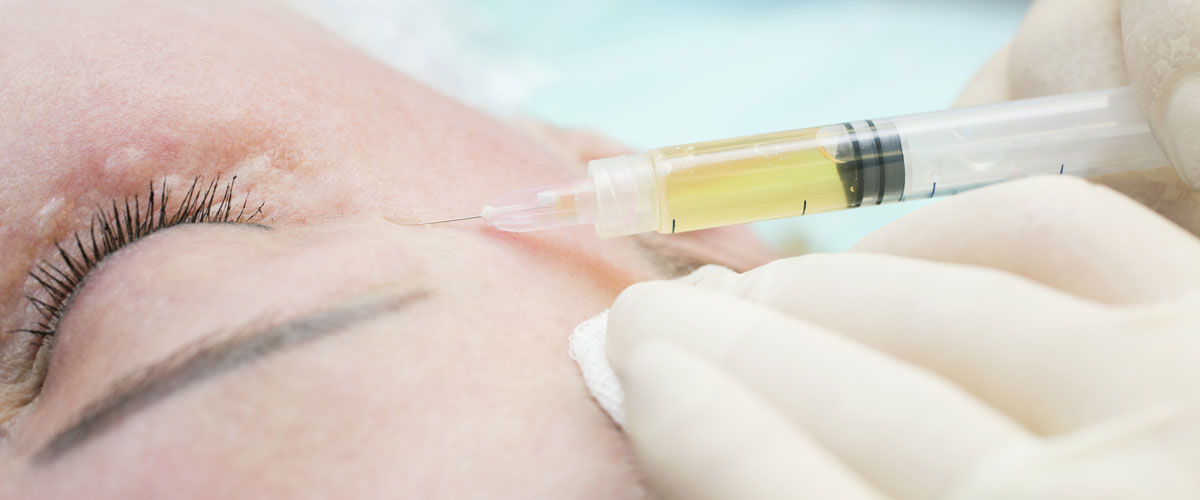
Some patients choose to combine a local anesthetic with an iv sedation or an oral sedative like valium. The sedation is similar to what you are given when you remove a tooth at the dentist. Either the iv sedation or the oral sedative can help take the edge off.
A lot of doctors will still employ an anesthesiologist to administer a combination of local anesthesia as well as sedation.
Blepharoplasty – Ideal Candidate
Before a blepharoplasty can be conducted, the patient has to be identified as a potential candidate for the procedure.
 If you are contemplating a more harmonious look to your face via a change in the bagginess, puffiness or droopiness of your eyelids or lower eyes, then a blepharoplasty could be the answer for you.
If you are contemplating a more harmonious look to your face via a change in the bagginess, puffiness or droopiness of your eyelids or lower eyes, then a blepharoplasty could be the answer for you.
Candidates should be non-smokers, healthy and aware that a blepharoplasty will not correct mental distortions that lead one to believe they look a certain way that is not generally seen by the rest of the world. It is most important that the patient be assured in their self worth and have positive self-esteem. The best candidate for a blepharoplasty will have goals to look forward too and a healthy outlook on their face and life in general.
Ideal candidates are 35 and over. But if a younger patient has the symptoms necessary, then age wouldn’t rule anyone out. It is most important to check with your doctor if a blepharoplasty is appropriate for any patient under 35 years of age.
Blepharoplasty – what happens during the procedure?
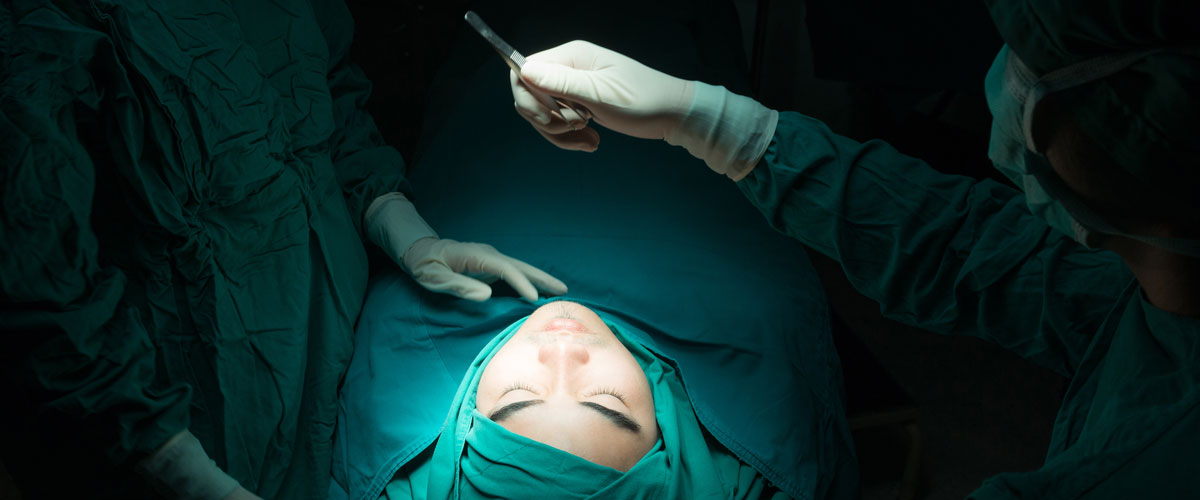
After the appropriate sedation has been administered, the surgeon begins to alter the skin around the eyes. If a patient is having both upper and lower eyelid surgery, the doctor will most probably start working on the upper eyelid first. They will begin to cut the extra skin on the upper eyelid and then close the incision when they have removed the necessary amount of skin.
For the lower lid area, the doctor will make a cut just under the eyelash line, so that it will hardly be visible when it heals. Once the cut is made, the doctor will remove the extra skin and will either remove fat and muscle or have either or both of them redistributed before closing the incision and finishing up the procedure
Blepharoplasty Recovery
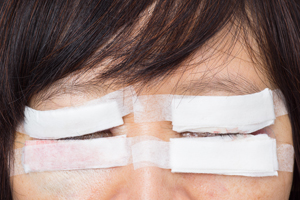 Recovery is different for each patient. After a blepharoplasty one will usually have stitches where the incisions were made either above or below the eyes.
Recovery is different for each patient. After a blepharoplasty one will usually have stitches where the incisions were made either above or below the eyes.
Most blepharoplasty patients have a substantial amount of bruising and swelling around their eyes. If you had a skin removal only, the swelling and bruising will be drastically minimized at around five to eight days after surgery. If you had skin as well as fat and muscle removal or distribution, the swelling and/or bruising will persist for up to two weeks.
You may possibly have blurred or double vision from the medication applied to the eye area and your eyes will most probably be watery. All these symptoms are normal and should not cause too much concern if they occur in the first week as they will slowly disappear day by day. If symptoms worsen or persist beyond your doctors given time frames, contact them immediately and have them check your progress for any irregularities during recovery.
 Stitches can be removed between five to eight days after surgery. The swelling will vary in the first month and you will see changes in the look and feel of your eyes day by day. After approximately five days, you will be able to start work. You will still have swelling and bruising but you will be able to cover it with make up.
Stitches can be removed between five to eight days after surgery. The swelling will vary in the first month and you will see changes in the look and feel of your eyes day by day. After approximately five days, you will be able to start work. You will still have swelling and bruising but you will be able to cover it with make up.
Without make up, you will be able to go to work, without people noticing at about the two or three week mark. If you wear contacts, be prepared to not be able to wear them for about two weeks. Fear not if as a result, your vision is impaired initially, you will be able to wear glasses immediately after the surgery.
The look of your eyes will start to stabilize at around six-eight weeks after the date of surgery. But don’t except to see the full results of your procedure until a year passes from the date of the procedure.
 It is most important that you rest in the first two weeks after surgery. If you can sleep with your head raised you will be able to limit the swelling. Your doctor may tell you to place ice packs around your eye area and they will most probably tell you not to take part in activities that will dry your eyes out (like reading, watching TV or using a laptop or iPad). Blinking will hurt and will increase your swelling if done in excess. So try not to blink as much as you can.
It is most important that you rest in the first two weeks after surgery. If you can sleep with your head raised you will be able to limit the swelling. Your doctor may tell you to place ice packs around your eye area and they will most probably tell you not to take part in activities that will dry your eyes out (like reading, watching TV or using a laptop or iPad). Blinking will hurt and will increase your swelling if done in excess. So try not to blink as much as you can.
Patients should not try and exercise until at least two weeks have passed. Your doctor will let you know when it’s safe to start working out again. To protect your eyes from the sun, you should wear dark sunglasses when outdoors immediately after the procedure and until at least two to three weeks. It’s also best to avoid drinking alcohol for at least two or three weeks as it can also cause your body to retain water, which will adversely, affect the swelling post surgery.
 Patients will most likely be given painkillers and possibly antibiotics to take post surgery. Doctors will also administer strict instructions for cleaning the eye area post surgery. To avoid complications or infections, follow all instructions carefully when it comes to taking post operational drugs and procedural care of the eye area.
Patients will most likely be given painkillers and possibly antibiotics to take post surgery. Doctors will also administer strict instructions for cleaning the eye area post surgery. To avoid complications or infections, follow all instructions carefully when it comes to taking post operational drugs and procedural care of the eye area.
Blepharoplasty Risks and Complications
Any surgery poses certain risks and it is up to the individual to raise all concerns about risks with their doctors. A blepharoplasty is no exception and there are risks that must be taken into account before deciding to undergo this type of plastic surgery. The most common are:
- Anesthetic: blepharoplasty is conducted under either local or general anesthetic. Please ask your doctor which you require so you can gain a thorough understanding of the risks involved.
- Infection: most surgeries have a risk of infection. A lot of time, infection can be avoided by taking an anti-biotic post operation.
- Bleeding: excessive bleeding should be reported to your doctor immediately.
- Difficulty closing your eyes: this may seem like it would never happen to you, but it is a common risk of having a blepharoplasty. Please ask your doctor if the look you are after might put you at risk of not being able to close your eyes post surgery.
- Temporary loss of sight: Patients may experience blurred, double or reduced vision temporarily as a result of this surgery.
- An outcome the patient doesn’t find pleasing: this can also lead to a revision surgery, which also carries its own set of risks depending on the specifications involved.
- This is not a surgery that you will need to undertake often. The results of a blepharoplasty can last from 10 to 20 years. So managing risks and expectations are important.
Transconjunctival Blepharoplasty
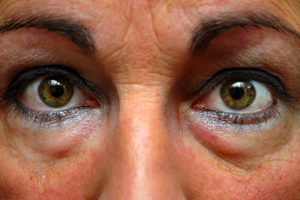 One of the risks with a lower eyelid surgery relates to the method used to conduct the procedure. Most lower eyelid surgeries are conducted via an external incision under the lower lash line. This incision provides great access to the lower eyelid area but can also give rise to certain complications. For example, sclera showing (when the lower white of the eye shows after surgery), caused from a mis-positioning of the lower eyelid or an ectropion (the turning out of the lower eyelid). Both these condition can be very irritating and can be avoided by using another method to access the fat in the lower eyelid that needs to be moved or removed.
One of the risks with a lower eyelid surgery relates to the method used to conduct the procedure. Most lower eyelid surgeries are conducted via an external incision under the lower lash line. This incision provides great access to the lower eyelid area but can also give rise to certain complications. For example, sclera showing (when the lower white of the eye shows after surgery), caused from a mis-positioning of the lower eyelid or an ectropion (the turning out of the lower eyelid). Both these condition can be very irritating and can be avoided by using another method to access the fat in the lower eyelid that needs to be moved or removed.
A transconjunctival blepharoplasty is one in which the fat in the lower eyelid is accessed via the inside of the lower eyelid (or what’s medically known as the inferior fornix). This avoids a scar on the external lower eyelid area and as such prevents a lot of the possible healing complications mentioned above.
Blepharoplasty Covered By Insurance
 If a patient is undertaking a blepharoplasty for cosmetic reasons it is unlikely that their insurance company will contribute to the cost of the surgery. If however, a patient undergoes a blepharoplasty due to an obstruction of vision, then their insurance company will assist in covering the costs. This obstruction of vision needs to be documented in your doctor visits and communicated to your insurance company.
If a patient is undertaking a blepharoplasty for cosmetic reasons it is unlikely that their insurance company will contribute to the cost of the surgery. If however, a patient undergoes a blepharoplasty due to an obstruction of vision, then their insurance company will assist in covering the costs. This obstruction of vision needs to be documented in your doctor visits and communicated to your insurance company.
Please contact your insurance company to find out more about the level of coverage that you have for such a procedure. It’s best to know ahead of time, so you can budget appropriately.
Non-Surgical Blepharoplasty
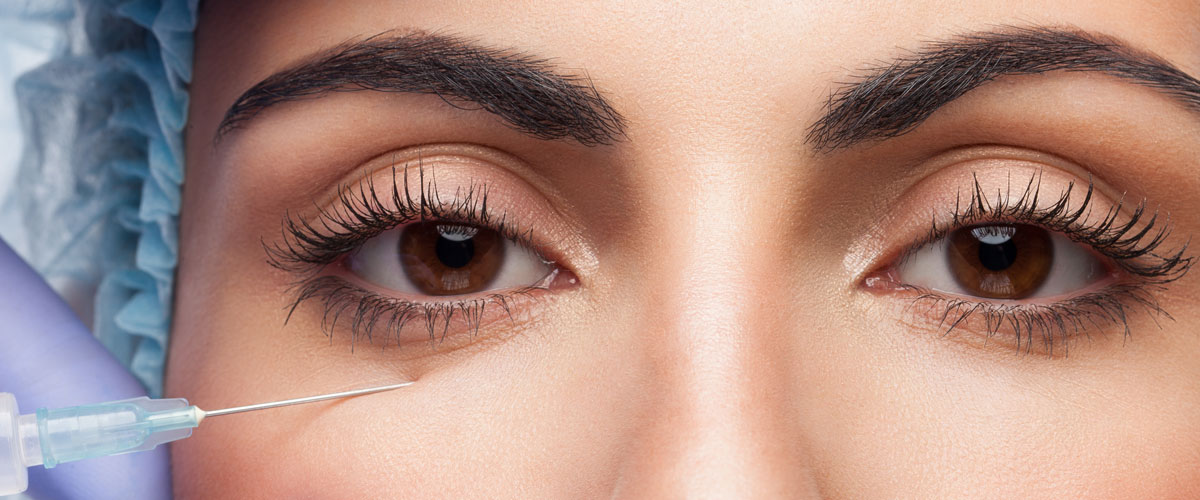
There are non-surgical options when it comes to wanting a more youthful appearance around your eyes. If you have lost fat cells around your eyes that have led to wrinkles, there are injectable fillers like restalyne that can be added to the area to make the skin appear taught and younger.
Before opting for a surgical blepharoplasty, be sure to explore all non-surgical options. They might work for you and will cause you a lot less pain!

